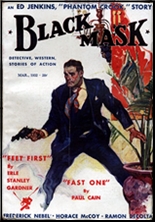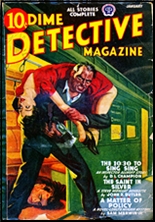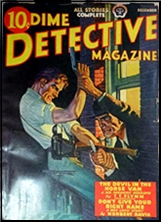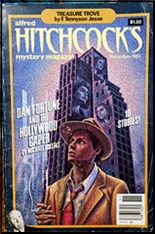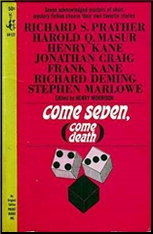Fri 13 May 2022
Stories I’m Reading: FRANK GRUBER “Death on Eagle’s Crag.”
Posted by Steve under Pulp Fiction , Stories I'm Reading[4] Comments
FRANK GRUBER “Death on Eagle’s Crag.†Oliver Quade #8. First published in Black Mask, December 1937. Reprinted in The Hardboiled Dicks, edited by Ron Goulart (Sherbourne Press, 1965).
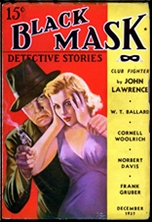
At the beginning of this fanciful, not to mention far-fetched tale, Oliver Quade, also known as The Human Encyclopedia, has somehow found his way to an isolated resort located at the top of a mountain, doing what he does best: trying to sell the owner a set of encyclopedias. She may be better at resisting, though, than he isat selling them when one of the guests is found dead along a walking path.
Remains of a bashed-up rattlesnake are found beside him, with vicious bite marks on his leg, but Quade quickly deduces it was a well-planned murder. The resort’s handyman is about to head down to notify the authorities when a car full of gangsters, escapees from a local prison, comes driving up the hill. Coincidences pile up quickly. The dead man, as it turns out, was a thief,and once the gang of crooks realize he must have hidden eighty grand worth of stolen cash on the grounds, they decide to stick around and keep all of the real guests hostage while they look for it.
Even while it incorporates a small token of goofiness, making the story is quite a bit of fun to read, it is amazing how Gruber manages to turn the story around on itself as he does, making it perhaps the most violent one in The Hardboiled Dicks, the anthology of stories from the detective pulps Ron Goulart put together in the mid-sixties. There’s nothing very deep to this one, but somehow I’ve managed to remember the basic plot, all these many years later.
Oliver Quade, who manages to find the money while under a lot duress in this one, was in 15 stories in the pulps. He wasn’t quite as inventive as MacGyver was in using his head to get out of jams, but selling encyclopedias for a living obviously gave him a decided edge over a lot of tough bad guys in his day.
Note: I first wrote a review of this story in 1967, and I posted it on this blog a few weeks ago. Follow the link and you can read it here.
